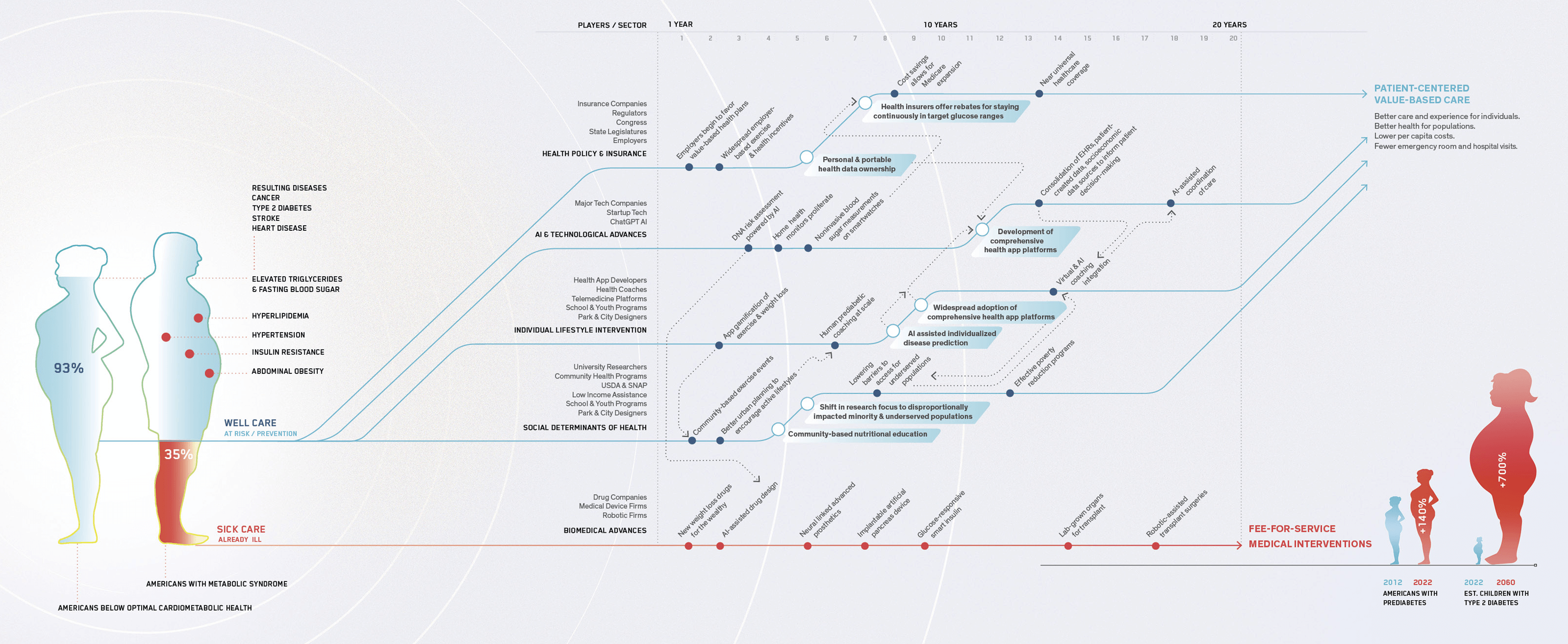The economics of healthcare is the elephant in the exam room. Money impacts everything in our medical system. Redesigning economic incentives can improve all aspects of healthcare, from patient experience to physician burnout. Will we see a future where the dazzling new ideas and technologies that we describe are deployed to optimally serve Americans?
Our current system is a paradox. On the one hand, science and technology in the past 100-plus years have vastly improved human health. Average lifespans have doubled, and the quality of life is dramatically better for millions of people. New discoveries and technologies continue to dazzle, and complex and costly interventions are on the rise. In 2022, there were 3,817 heart transplants in the US, up tenfold from a decade ago. But it’s a system designed to treat the sick, and one rife with waste, exorbitant costs and soaring profits that too often benefit shareholders and special interests over people.
While medical providers and caregivers care deeply for their patients, the system makes it difficult to prioritize the longterm health of individuals. Our current fee-for-service system focuses on treating, not preventing, illness. Chronic conditions that require lifelong medications and expensive procedures are the profit centers for clinicians and hospitals.
In 2023, Medicaid will serve more than 100 million low-income people— fully one in three insured Americans. Unfortunately, recipients of the program often struggle to find primary care doctors and face long delays for surgery or specialty care. The result is that ERs are overused and fewer patients receive preventive screenings or consistent help managing chronic conditions. Medicare benefits in 2021 totaled $829 billion, rising from $541 billion in 2011.
At almost $5 trillion a year, healthcare costs in the US are unsustainable. That’s $13,000 per person, an amount more than the annual income of people living in over 100 nations. The US ranks number one in per capita expenditures on healthcare, followed by Germany at $7,383 per person. Other wealthy countries spend around $6,000 per person a year—less than half the US expenditure. All totaled, healthcare costs account for nearly one-fifth of the country’s gross domestic product.
I cannot say whether things will get better if we change; what I can say is they must change if they are to get better.
Georg C. Lichtenberg
18th-century German physicist
-
$13 THOUSAND
Annual healthcare cost per person, US
-
14%
Pharmaceutical company net profit margin
-
$5 T
US annual healthcare spending
Despite the cost of our healthcare system, the US ranks 54th in infant mortality— behind Uruguay, Cuba and Russia and 34th in life expectancy. The US is still home to some of the best outcomes when it comes to highly technical procedures such as organ transplants and individualized cancer care. But for many other diseases we rank near the bottom of the 38 OECD (Organization of Economic Co-operation and Development) countries, which include many of the world’s wealthiest nations. The US also ranks among the highest for obesity and diabetes. Fully six in ten Americans have one or more chronic conditions including high blood pressure, diabetes and mental illness. Four in ten are dealing with more than one disease.
At the same time, in 2020 the 35 largest pharmaceutical companies had double the net profit margin (nearly 14%) of non-pharma companies listed on the S&P 500 Index. For-profit hospitals have made nearly 11% in net profits since 2019, even during the pandemic. Employee-sponsored health insurance has soared 47% for the average family since 2011, with deductibles consuming almost 12% of their income. Recent polls have found that 46% of insured adults struggle to afford out-of-pocket costs and 29% don’t take prescribed medicine because it costs too much. Medical costs are the number one cause of personal bankruptcies in the country.
-
21%National healthcare expenses paid by Medicare, 2021
-
6 IN 10Americans have a chronic health condition
MEDICAID
In 2023, Medicaid will serve more than 100 million people—fully one in three insured Americans. Unfortunately, recipients of the program often struggle to find primary care doctors and face long delays for surgery or specialty care. The result is that ERs are overused and fewer patients receive preventive screenings or consistent help managing chronic conditions. Medicare Advantage, created in 1997, is intended to incentivize doctors and health systems to keep patients healthy. Companies like Amazon, CVS and Walmart are experimenting with similar models in hopes of lowering costs and improving health outcomes.
The Pathway From Fee-based To Value-based Healthcare
EXAMPLE: METABOLIC SYNDROME & TYPE 2 DIABETES
Metabolic Syndrome
In the US, we spend trillions of dollars treating the conditions resulting from metabolic syndrome. While it is important to have interventions for those already ill, there is much more we can do. Obesity and metabolic syndrome and all the attendant complications are not inevitable. However, prevention will require a fundamental rethinking of our shared approach to healthcare. We will need a renewed focus on the social and economic determinants of health. Prevention will also require changes in our food system, and the layout of our cities, along with a deeper understanding of the health impact of poverty and inequality.
Metabolic syndrome is characterized by abdominal obesity, insulin resistance, hypertension and hyperlipidemia. The syndrome causes or contributes to numerous devastating diseases, including cancer, type 2 diabetes, strokes and heart disease, among others. Although Western countries are the most affected, metabolic syndrome has become a global condition, particularly in urban centers in emerging economies. The rise of this noncommunicable disease has become the major health challenge of modernity.
Diabetes and Prediabetes
- More than 130 million US adults have diabetes or prediabetes.
- Rates of type 2 diabetes among children are expected to rise 700% by 2060.
- The number of Americans with prediabetes has risen 40% in the last decade.
- 26 million elderly (half the population) have prediabetes.
- Without changing our approach, 1 in 3 Americans could have diabetes by 2050.
The total cost of metabolic syndrome, including the cost of healthcare and loss of potential economic activity, is in the trillions. The present trend is not sustainable unless a magic cure is found (unlikely) or concerted global, governmental and societal efforts are made to change the lifestyle that is promoting it.
Mohammad G. Saklayen
Professor of Medicine and Director of Nephrology Division at Wright State University
The overriding philosophy for optimizing healthcare for 2040 will be to shift to a system that prioritizes patients and preventive care to keep people healthier longer—while streamlining management and reducing waste. According to a study in the Journal of the American Medical Association, waste in the US healthcare system equals about 25% of the total spent—or around $1.2 trillion. If this waste were eliminated starting next year, the US would save over $20 trillion by 2040.
AN UNHEALTHY DEPENDENCY ON THE FEE-FOR-SERVICE MODELThis is Public Enemy No. 1—a system that incentivizes providers and caregivers to order as many tests and procedures as possible, and to charge often exorbitant rates for every Band-Aid, cholesterol test and surgery. Medicare and regulators have tried to tamp down costs and have made some reforms, but often they are thwarted by the lobbying of special interests. Private insurers often deny procedures and care, but frequently end up paying whatever providers charge and passing on the costs to policyholders and government. | OPTIMAL FIX BY 2040Change the current fee-for-service system to a value-based system that bundles costs into single charges for procedures and services and financially rewards payers, caregivers and providers for delivering quality care and optimal outcomes based on keeping people well. | |
PHARMA HAS A LICENSE TO PRINT MONEYThe incentives in the pharmaceutical industry are perhaps the most perverse. No doubt, the R&D for new drugs is expensive, which is why drug companies are allowed to hold exclusive long-term patents and generally charge whatever they want. Companies are incentivized to charge prices far in excess of costs, and to focus on meds that patients will take for years (for chronic conditions like diabetes or hypertension) rather than drugs like antibiotics and vaccines that are taken once or episodically. | OPTIMAL FIX BY 2040Create price ceilings for drugs and limit drug company profits, keeping them in line with non-pharma industry norms. | |
PRIVATE VS. PUBLICThose who defend the current system often claim that there is a stark choice between highly efficient private healthcare that is market-driven and bloated, and inefficient single-payer healthcare systems paid for with taxes and delivered by the government. This is a false choice. With government-enforced virtual monopolies for drug companies, there is no true free market. Evidence also suggests that Medicare and the US Department of Veterans Affairs offer more patient-centric care than the private sector. | OPTIMAL FIX BY 2040Ideally, the system would be more efficient and less bloated if all Americans had basic healthcare paid for by the Centers for Medicare and Medicaid Services. People would still be free to supplement this with private insurance, as they do in Germany and most other Western European insurance systems. | |
US Healthcare Delivery Is Highly Decentralized—Change Will Not Come EasilyCurrently there are more than 400 health systems with 6,000 hospitals and nearly 35,000 ambulatory care centers, all regulated by a mishmash of federal, state and local policies. Over 900 health insurance companies operate in the US, employing 560,000 people to manage 224 million covered Americans— a 1-to-400 ratio. Medicare and Medicaid employ roughly 6,000 workers to manage 64 million Americans—a 1-to-10,000 ratio. Changing this system to emphasize health and preventive care will be a herculean task. | OPTIMAL FIX BY 2040With a more centralized system styled after Medicare and Medicaid, all Americans would be insured by 2040 and much of the $260 billion in administrative waste (according to JAMA) would likely be reduced or eliminated. | |
DECENTRALIZED AND UNDERUTILIZED HEALTH DATAIn an era where our data is being collected and used all the time by advertisers and companies trying to sell us things, it’s astonishing that the healthcare system can’t collect and centralize health data that can follow us to wherever we need it to be. Electronic Medical Records are too often used to track payments to providers rather than to improve people’s health. Personal data collected on wearables and in tests, exams and checkups often isn’t used to track patients’ health or to inform treatments or for preventive care. | OPTIMAL FIX BY 2040As the technology for analyzing health data becomes more effective, doctors will be able to better predict future diseases. This will incentivize healthcare systems to compete based on the level of preventive care they provide. With these vast troves of data, we’ll also have a better understanding of which community-level interventions are most effective. A comprehensive system focused on keeping people well would save Americans trillions of dollars and bring costs more in line with other industrialized countries. | |
GEOGRAPHY AND INEQUALITY OF ACCESSRight now, hospitals often charge radically different prices for the same procedure or service even in the same city and from state to state. For instance, the same MRI scan can cost between $400 and $12,000 depending on a person’s provider or payer or the state they live in. Medicare and Medicaid have tried to standardize pricing, but the efforts have largely failed. The Affordable Care Act, launched in 2009, proved change was possible. In 2022 uninsured rates reached an all-time low of 8% from 15% pre-Obamacare. This impressive change still left 26 million Americans without health insurance. Minorities, the economically disadvantaged and those with chronic health conditions have the greatest challenge in getting affordable health insurance and in accessing care. | OPTIMAL FIX BY 2040Moves to standardize pricing for health services and procedures would remove a great deal of confusion and help alleviate the tens of billions of waste from overcharging each year. Making the 2009 Affordable Care Act (Obamacare) universal would ensure that all Americans are insured by 2040. |

